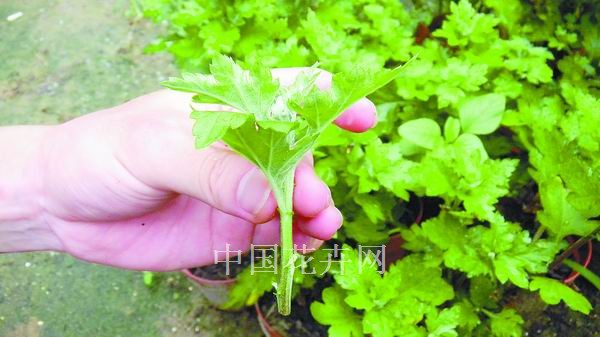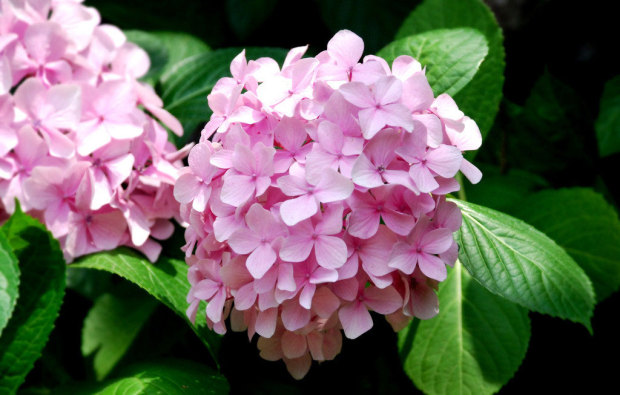Cultivation and Culture methods of Rosa davidiana
Yellow thorn rose is commonly known as thorn rose, yellow thorn rose because the flower is yellow, so it is called yellow thorn rose. It is the most common in North China. The prickly shrubs that bloom in early summer often bloom in May. The golden double flowers stand out against the green leaves and purple branches. It is named after the cultivated double-petal species, so the wild single-petal original species has become a variety, later than it. The original wild single-petal species are distributed in Taihang Mountain, Luliang Mountain, Zhongtiao Mountain and other mountains in North China, as well as in the south of Northeast China and North Korea. Most of them were born on the sunny slope of 1200 meters above sea level. It likes to be positive, dry, cold-resistant, drought-resistant, barren, and avoid waterlogging. After wild planting, the fruit is spherical and purplish red. The cultivation of double-petal species is difficult to bear fruit. The multipurpose method of breeding and cultivation is to cut the branches again, leaving only 30ml / 50cm, and then use a sharp knife or axe to split the roots. When splitting roots, pay attention to separate clumps of plants should have 3 Murray 5 branches, all branches should have good roots. In addition, the strip pressing method can also be used to propagate; in recent years, the method of rooting of cuttings has been found out, mainly that the cuttings should increase the bottom temperature and maintain a high humidity, so that the roots can grow well in more than a month, and the cultivation of yellow thorn rose should choose the sunny and dry place. shaded places often grow weak because of lack of light, flowers are reduced and flowers are small, and there are not so many petals.

When newly planted, it is necessary to apply some organic fertilizer properly. Those who re-cut ramets and those who have good management of water and fertilizer after planting will be able to bloom well in the second year. After the flower fade, it is appropriate to cut off the residual flowers together with some branches, which can not only keep the plants clean and tidy, but also promote new branches. Old branches should also be properly re-cut and renewed. Cultivation techniques and price of Rosa przewalskii
Basic introduction first of all, we need to know what is Huang Ximei? It belongs to deciduous shrubs, flowering between May and June, and its fruit is red and yellow, of course, it belongs to Fuxin City, Liaoning Province. And in the south of Shanxi Province, it is commonly known as "Ma Ruzi". So today let's take a closer look at the relevant knowledge about Huang Ci Mei.
Growth habit yellow thorn rose it is like the sun, and can also be a little shade-resistant, and its cold resistance is very strong. However, it is not strict with the soil, can withstand drought and barren, and can grow even in saline-alkali soil, so it is best to grow on loose and fertile land. It can't stand waterlogging. It belongs to deciduous shrubs. Of course, there are fewer diseases and insect pests.
Culture method the main propagation method of Rosa davidiana is still the method of dividing plants. Because the tillering ability of Rosa przewalskii is very strong, and the double species generally will not bear fruit, so the method of ramet propagation is the simplest and quickest. The survival rate is high. And for single-petal species, it can also be sowed. Cuttage and striping propagation. Because the yellow thorn attack is cultivated and applied in the north most of the time, and the average temperature in spring is relatively low, we can use more tender wood cuttings, while in the north, we can choose the same year's semi-lignified branches for cutting in the first and middle of June. the method is the same as the spring cutting method in the same month. Ramet is carried out before sprouting in early spring and after the earth is thawed. When ramet, the branch is re-cut, the root is dug up, and the root is split with a sharp knife. After planting, it is necessary to strengthen fertilizer and water management.
The planting of Rosa roxburghii is generally from late March to early April. It needs to be planted with soil balls, and when planting, the compost of 1-2 shovel is applied as the base fertilizer, cut again after planting, watered thoroughly after planting, and then irrigated once every 3 days or so, it can survive. It is generally not necessary to apply fertilizer after survival, but in order to make it flourish, topdressing can be applied every other year after flowering. In daily management, water should be watered in time according to drought, so as to avoid wilting or even death caused by excessive drought and lack of water. Pay attention to drainage and waterlogging prevention in the rainy season, and irrigate once anti-freezing water before frost. Pruning should be carried out after flowering, and the residual flowers and dead branches should be removed to reduce nutrient consumption. Pruning the ramets after falling leaves or before sprouting, cutting off old branches, withered branches and overdense thin and weak branches to make them grow vigorously. The 1-year-old and 2-year-old branches should be cut as little as possible so as not to reduce the number of flowers. Yellow thorn rose has the advantages of easy cultivation, extensive management and less diseases and insect pests.
Price the latest price for Huang Ci Mei ranges from 5 yuan to 4-5 yuan.
The method of culture management of Rosa davidiana, Latin name: Rosa xanthina Lindl, deciduous shrub. Branchlets brown or maroon, spiny. Leaves odd-pinnate, leaflets often 7-13, suborbicular or elliptic, margin serrate; stipules small, lower part connected with petiole, apex divided into lanceolate lobes, margin glandular, subentire. Flowers yellow, single or orchid double, ebracteate. Flowering from May to June. Fruit globose, red and yellow. The fruit period is from July to August. Shihua, Fuxin City, Liaoning Province. Southern Shanxi is commonly known as "Ma Ruzi".
Culture method: the separate plant method is mainly used in the culture of Rosa davidiana. Because of the strong tillering ability of yellow thorn and the general failure of double species, the method of ramet culture is simple and rapid. and the survival rate is high. Sowing can also be used for single-petal species. Cuttage and striping culture. Ramet culture: it is usually carried out before bud germination in late March in spring. Dig up the whole plant and divide it into several parts, each with at least 1 or 2 branches and part of the root system, then replant it separately and pour it into water after planting. Grafting. Wild thorn rose, which is easy to take root, was used as rootstock and yellow thorn rose was used as scion from December to early January of next year. The length of the rootstock is about 15cm. Take the yellow thorn rose bud with a little xylem, cut off the upper end of the rootstock with wood, fasten the yellow thorn rose bud with plastic film, press 50 plants and 1 bundle, and store them with wet sand in mud to promote healing and rooting. After the middle of March, the seedlings were planted separately, the row spacing was 20cm × 40cm, and the survival rate was about 40%. Cuttings. In the rainy season, the Lignification branches of the same year were cut, the cuttings were 10-15cm long, and 2-3 leaves were left, which were inserted into the sand with 1-2cm, and the row spacing was 5cm × 7cm. Ramets are carried out at the time of budding in early spring. Press the twigs into the earth in July. Cultivation and management: like light, slightly resistant to shade, strong cold tolerance. It is lax in soil, resistant to drought and barren, and can grow in saline-alkali soil. I can't stand waterlogging. For deciduous shrubs. Rosa przewalskii is usually planted from late March to early April. It needs to be planted with soil balls, and when planting, the compost of 1-2 shovel is applied as the base fertilizer, cut again after planting, watered thoroughly after planting, and then irrigated once every 3 days or so, it can survive. It is generally not necessary to apply fertilizer after survival, but in order to make it flourish, topdressing can be applied every other year after flowering. In daily management, water should be watered in time according to drought, so as to avoid wilting or even death caused by excessive drought and lack of water. Pay attention to drainage and waterlogging prevention in the rainy season, and irrigate once anti-freezing water before frost. Pruning should be carried out after flowering, and the residual flowers and dead branches should be removed to reduce nutrient consumption. Pruning the ramets after falling leaves or before sprouting, cutting off old branches, withered branches and overdense thin and weak branches to make them grow vigorously. The 1-year-old and 2-year-old branches should be cut as little as possible so as not to reduce the number of flowers. Yellow thorn rose has the advantages of easy cultivation, extensive management and less diseases and insect pests.
- Prev

Culture techniques of summer chrysanthemum
In our country, breeding chrysanthemum generally cuttings chrysanthemum buds before and after the Spring Festival, which takes a long time. Now, some places choose the cutting time in summer. This method can effectively shorten the growth period of chrysanthemum and improve the ornamental effect. The main steps are as follows: cutting chrysanthemum buds in early June
- Next

Cultivation and Culture methods of Hydrangea
Hydrangea, because of its corymbose inflorescence with most sterile flowers, as few as eight, many are innumerable names; and because its inflorescence is compact, shaped like hydrangea, it is named Hydrangea, it has two types of flowers, small flowers in the middle, bisexual, fruiting after flowering; large flowers live outside, scattered around, no stamens, only attract insects, set off the core of flowers
Related
- Fuxing push coffee new agricultural production and marketing class: lack of small-scale processing plants
- Jujube rice field leisure farm deep ploughing Yilan for five years to create a space for organic food and play
- Nongyu Farm-A trial of organic papaya for brave women with advanced technology
- Four points for attention in the prevention and control of diseases and insect pests of edible fungi
- How to add nutrient solution to Edible Fungi
- Is there any good way to control edible fungus mites?
- Open Inoculation Technology of Edible Fungi
- Is there any clever way to use fertilizer for edible fungus in winter?
- What agents are used to kill the pathogens of edible fungi in the mushroom shed?
- Rapid drying of Edible Fungi

